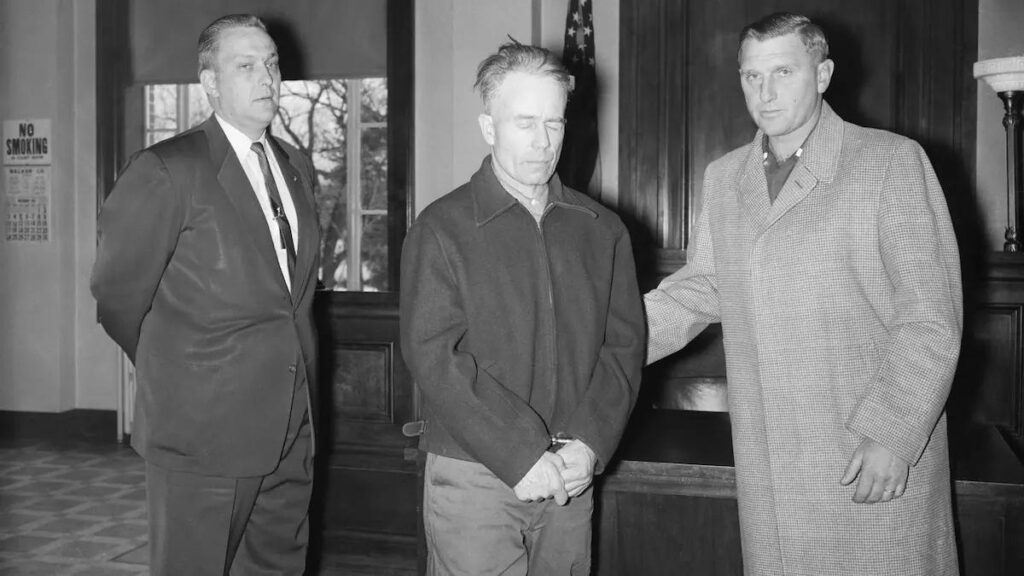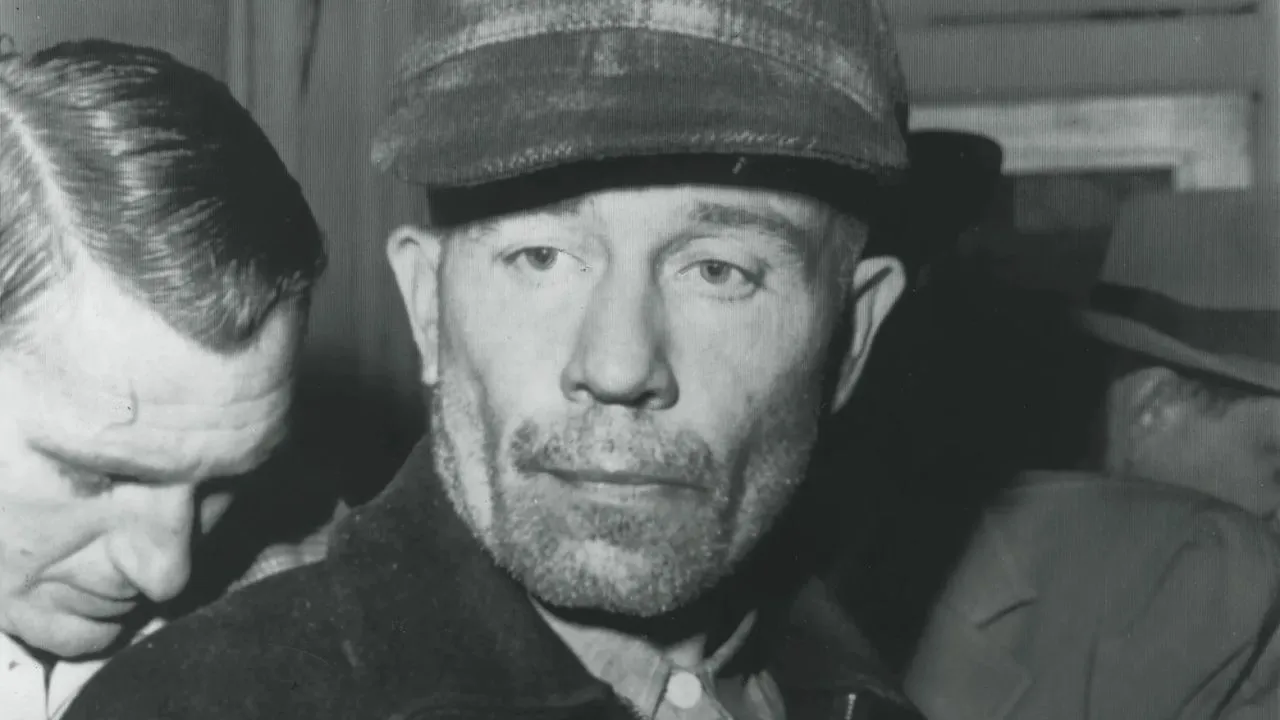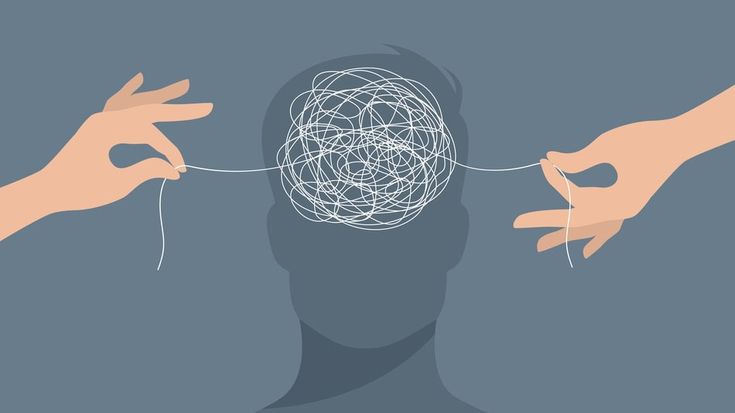After the Netflix series, Monster: The Story of Ed Gein, we have created this article so that you can learn the full story and the psychological analysis surrounding the infamous Ed Gein.
Childhood and Family
Edward Theodore Gein was born on August 27, 1906, in La Crosse, Wisconsin, the son of George and Augusta Gein.
His mother, Augusta, was an authoritarian Lutheran religious fanatic who viewed the world as a place full of sin and corruption. She considered all women (except herself) to be “instruments of the Devil.” His father, George, was an alcoholic, violent, and had no steady employment. Augusta raised Ed and his brother Henry in an extremely isolated environment. She forbade them from having friends, talking to women, or leaving home except to attend school.
She read the Bible to them daily, focusing on passages about punishment, sin, and hell. Ed developed an unhealthy adoration for his mother, who was psychologically abusive but was his sole figure of love.
💀 Adolescence and Young Adulthood
When Ed was young, he began to show signs of strange and withdrawn behavior. He struggled socially, was shy, and was often mocked at school.
He was fascinated by books on human anatomy, medical experiments, and cannibal tribes. After his father’s death in 1940, Ed and Henry began working on the family farm. In 1944, his brother Henry died in a fire under mysterious circumstances.
Ed claimed they had separated while putting out the fire, but he guided police directly to Henry’s corpse, even though he “officially” did not know its location. The body had bruises on the head, but the death was never investigated as a homicide.
Many believe Ed killed him because Henry had been critical of their mother.
🕯️ Death of Augusta and the Descent Begins
In 1945, Augusta Gein died after suffering a stroke.
Ed was left completely alone, devastated, and became totally withdrawn. He sealed off his mother’s rooms (as a kind of shrine) and only lived in a small area of the house. It was then that he began visiting cemeteries at night, digging up the bodies of women who reminded him of his mother. He claimed he would enter a kind of “trance” and later not remember stealing the bodies.

🪓 Crimes and Desecrations
Between 1947 and 1957, Ed Gein committed numerous grave robberies in the Plainfield cemeteries.
He exhumed recently deceased women, dismembered them, and took the parts back to his house. With their skin and organs, he manufactured household objects: Masks and belts made from human skin. Bowls made from skulls. Lamps and chairs upholstered with skin. Clothing made from body parts (breasts, vulvas, nipples). His confessed goal was to create a “woman suit” to “become his mother” and “live inside her skin.”
🔪 Confirmed Murders
Although he desecrated many bodies, he was only definitively linked to two murders:
Mary Hogan (1954): Owner of a local tavern. She disappeared without a trace. Years later, investigators found her mummified head in Ed’s house. Bernice Worden (1957): Owner of a hardware store. She disappeared on November 16, 1957. Police followed blood trails to Ed’s farm and found her body hanging upside down, decapitated and eviscerated, like a game animal.
🚨 Arrest and Findings
When police searched the farm, they discovered a chilling scene:
9 human masks hanging on the walls. Shrunken heads and preserved genitalia. A corset made from human skin. Skulls used as bowls. Organs stored in jars. The officers were so shocked that some had to leave the scene due to nausea.
⚖️ Trial and Imprisonment
Ed Gein confessed to the crimes without showing much emotion.
He was declared mentally incompetent and sent to the Central State Hospital for the Criminally Insane.
Years later, he was deemed fit for trial but was again found legally insane and spent the remainder of his life in psychiatric institutions.
He died of cancer in 1984, at the age of 77.
🎭 Cultural Influence
His case inspired three of the most famous fictional movie killers:
Norman Bates (Psycho, 1960) → for his sick relationship with his mother. Leatherface (The Texas Chainsaw Massacre, 1974) → for his use of human masks. Buffalo Bill (The Silence of the Lambs, 1991) → for his desire to wear female skin.
Psychological Analysis of Ed Gein
🧠 1. Basic Psychological Context
From childhood, Ed Gein grew up in an environment of extreme social isolation and rigid religious indoctrination, where sex, femininity, and autonomy were considered sinful. His mother, Augusta, not only overprotected him but also depersonalized him:
She was his sole source of affection and authority. She instilled a dual worldview: women were either pure (like her) or demonic. He developed a total emotional dependency, a kind of symbolic, non-sexualized, incestuous bond. When Augusta died, Ed lost the only figure that gave meaning to his life. This void triggered a psychotic collapse, leading to dissociative behaviors and the creation of his own symbolic world.

🪞 2. Predominant Personality Traits
Psychiatric evaluations described him as having several coexisting personality disorders:
a) Schizoid Personality Disorder: A tendency toward social isolation. Poor development of social skills. Lack of empathy and emotional detachment from others. Rich inner fantasies and imaginary worlds. b) Obsessive-Compulsive Disorder with Psychotic Components: Ritualistic behaviors (grave robbing in a “trance”). Obsession with purity, death, and preserving his mother. Uncontrolled repetitive impulses, followed by dissociation. c) Schizophrenic or Schizoaffective Disorder (Debated Diagnosis): Periods of religious delusions and auditory hallucinations (he claimed to hear his mother’s voice). Confusion between reality and fantasy: he believed he could “revive” his mother by reconstructing her with human parts.
🩸 3. Necrophilia and Body Fetishism
Although commonly labeled a necrophile, Gein’s case was atypical.
He did not show sexual excitement toward the dead bodies themselves, but rather toward the idea of “being” his mother. In clinical terms, this was a psychotic identification with the maternal figure, coupled with transgender body fetishism:
He did not want to rape the dead but rather use them to transform himself. He created a “woman suit” (made of human skin) to “become his mother” and thus “resurrect her.” In forensic psychiatry, this is classified as a delusion of symbiotic incorporation: the individual seeks to merge with a lost loved one.
🧩 4. Dissociation and Selective Amnesia
Ed Gein claimed not to remember many of the things he did.
This is interpreted as psychotic dissociation: He entered an altered state of consciousness (trance-like) when robbing graves or handling corpses. Upon returning to normalcy, he experienced partial amnesia, a defense mechanism to block the trauma or horror of his own actions.
🕯️ 5. The House as a Reflection of His Mind
Ed Gein’s physical environment was a mirror of his mental structure:
The sealed, clean rooms (his mother’s) represented the idealization and sanctification of the past. The areas where he lived (dirty, filled with human remains) symbolized his internal degradation and moral confusion. His house functioned as a “dissociative space,” where the boundary between the sacred and the profane, the living and the dead, had been erased.

⚖️ 6. Official Psychiatric Diagnoses
During his trial and stay in psychiatric hospitals, he was diagnosed with:
Paranoid Schizophrenia (due to his delusions and voices). Psychosis induced by trauma and isolation. Antisocial Personality Disorder with schizoid traits. He was found not guilty by reason of insanity and considered legally not responsible, as his actions stemmed from a psychotic state and not from rational intent.
💀 7. Forensic Analysis of Symbolism
The objects he manufactured had deep symbolic value:
Masks and human skin → fusion with the mother, “to be her.” Skull bowls → ritualization of death. Preserved female organs → an attempt to appropriate “maternity.” All of this was part of an unconscious ritual of symbolic resurrection.
🔒 8. In Conclusion
Ed Gein was not a sadistic killer, but a ritualistic psychotic:
He did not kill for pleasure, power, or domination. He killed (and robbed corpses) to reconstruct an impossible emotional bond. His mind had collapsed between religious guilt, maternal loss, and psychotic dissociation. This is why his case is one of the most studied in clinical criminology: not because of the number of victims, but because of the symbolic and psychologically complex nature of his crimes.








Leave a Reply